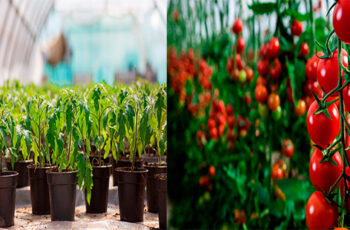Ad Blocker Detected
Our website is made possible by displaying online advertisements to our visitors. Please consider supporting us by disabling your ad blocker.
#4 Transplants Vs. Direct Seeding
When it comes to growing cucumbers, there are two options: direct seeding or transplanting. While direct seeding is a simple way to grow cucumbers, many gardeners prefer starting their seeds early and transplanting them for better results. Transplants tend to have stronger growth, making them more resistant to cucumber beetle attacks.
For transplanting, two cucumber transplants should be planted per mound. If you choose to direct seed, plant three seeds and then thin them down to the two strongest plants after a few weeks. By growing multiple vines per mound and allowing them to intertwine, you can further enhance their strength.
#5 Be Careful What You Plant Nearby
The productivity of your cucumbers can be significantly impacted by what you choose to plant around them. It is important to avoid planting potatoes near your cucumber plants as they release a substance into the soil that can severely hinder cucumber growth, potentially resulting in a ruined crop.
On the other hand, some crops can be highly beneficial when planted near cucumbers, such as radishes. These plants have the ability to repel harmful insects like cucumber beetles and aphids that often attack cucumber plants. By planting radish seeds around the edges of your cucumber mounds, you can help prevent these pests from damaging your crop.
Planting radishes with cucumbers is an effective way to stave off beetle attacks. Simply sow 5 to 10 radish seeds around the perimeter of your cucumber mounds and they will quickly germinate, providing a natural barrier against the beetles. Remember to be mindful of what you plant near your cucumbers, as it can have a significant impact on their growth and productivity.
#6 Crop Rotation: An Essential Practice for Healthy Plants
Planting the same crop in the same area year after year can have negative effects on the soil and plant health. This is especially true for cucumbers, tomatoes, and peppers, which are prone to soil-borne diseases. To prevent this, it is crucial to practice crop rotation.
Crop rotation involves moving your crop to a new location in the garden each season. This allows the soil to recover and reduces the possibility of long-term infestation. It also helps to minimize disease and keep your plants healthy and strong.
For optimal results, it is advisable to wait for at least three years before rotating back to plant cucumbers in the same location. By practicing crop rotation, you can ensure that your plants thrive and produce healthy yields, season after season.

